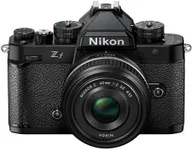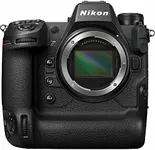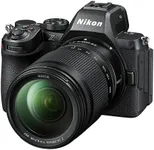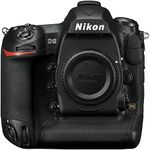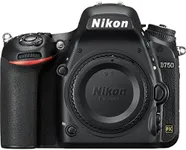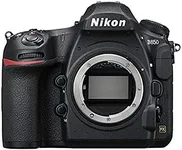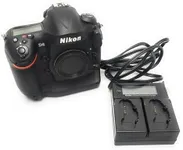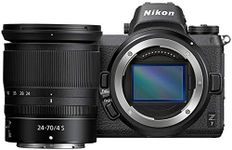Buying Guide for the Best Nikon Full Frame Cameras
Choosing the right Nikon full-frame camera can be a rewarding experience, especially if you know what to look for. Full-frame cameras are known for their superior image quality, low-light performance, and depth of field control. When selecting a camera, it's important to consider your specific needs and how you plan to use the camera. Here are some key specifications to help you make an informed decision.Sensor ResolutionSensor resolution, measured in megapixels (MP), determines the amount of detail a camera can capture. Higher resolution is important for large prints and cropping images without losing quality. Cameras with 20-30 MP are generally sufficient for most users, providing a good balance between image quality and file size. If you need extremely high detail for professional work or large format printing, consider cameras with 40 MP or more. For everyday photography and sharing online, a lower resolution may be more than adequate.
ISO RangeThe ISO range indicates the camera's sensitivity to light. A wider ISO range allows for better performance in low-light conditions. Cameras with an ISO range of 100-12,800 are suitable for most situations, providing good image quality in various lighting conditions. If you frequently shoot in very low light or need to capture fast-moving subjects in dim environments, look for cameras with an extended ISO range, such as 50-102,400 or higher. For general use, a standard ISO range will suffice.
Autofocus SystemThe autofocus (AF) system determines how quickly and accurately the camera can focus on a subject. A more advanced AF system with more focus points and better tracking capabilities is crucial for action, sports, and wildlife photography. Cameras with 50-100 focus points are typically sufficient for most users, offering reliable performance for portraits, landscapes, and everyday photography. If you need to capture fast-moving subjects or require precise focus in challenging conditions, consider cameras with 150 or more focus points and advanced tracking features.
Frame RateFrame rate, measured in frames per second (fps), indicates how many images a camera can capture in one second. A higher frame rate is important for action and sports photography, where capturing fast sequences is crucial. Cameras with a frame rate of 5-10 fps are generally adequate for most users, providing a good balance between speed and image quality. If you need to capture very fast action, look for cameras with a frame rate of 10 fps or higher. For general photography, a lower frame rate will be sufficient.
Video CapabilitiesVideo capabilities refer to the camera's ability to record video, including resolution and frame rate. Full HD (1080p) is suitable for most users, offering good quality for online sharing and personal projects. If you need higher quality for professional work or future-proofing, consider cameras with 4K or even 8K video recording. Additionally, look for features like slow-motion recording, high frame rates, and external microphone inputs if you plan to do serious videography. For casual video recording, standard HD or Full HD will be sufficient.
Build Quality and Weather SealingBuild quality and weather sealing are important for durability and protection against the elements. Cameras with robust build quality and weather sealing are essential for outdoor and travel photography, where conditions can be unpredictable. If you frequently shoot in harsh environments or need a camera that can withstand rough handling, look for models with magnesium alloy bodies and comprehensive weather sealing. For indoor or controlled environments, a camera with standard build quality will be sufficient.
Battery LifeBattery life, measured in the number of shots per charge, is crucial for extended shooting sessions. A longer battery life means fewer interruptions and less need to carry spare batteries. Cameras with a battery life of 300-500 shots per charge are generally adequate for most users, providing enough power for a day of shooting. If you plan to shoot extensively or in remote locations where recharging is difficult, look for cameras with a battery life of 600 shots or more. For occasional use, a standard battery life will be sufficient.
ConnectivityConnectivity options, such as Wi-Fi, Bluetooth, and NFC, allow for easy sharing and remote control of the camera. These features are important for quickly transferring images to your smartphone or controlling the camera from a distance. If you frequently share photos on social media or need to control the camera remotely, look for models with built-in Wi-Fi and Bluetooth. For users who prefer traditional methods of transferring images, connectivity options may be less critical.


